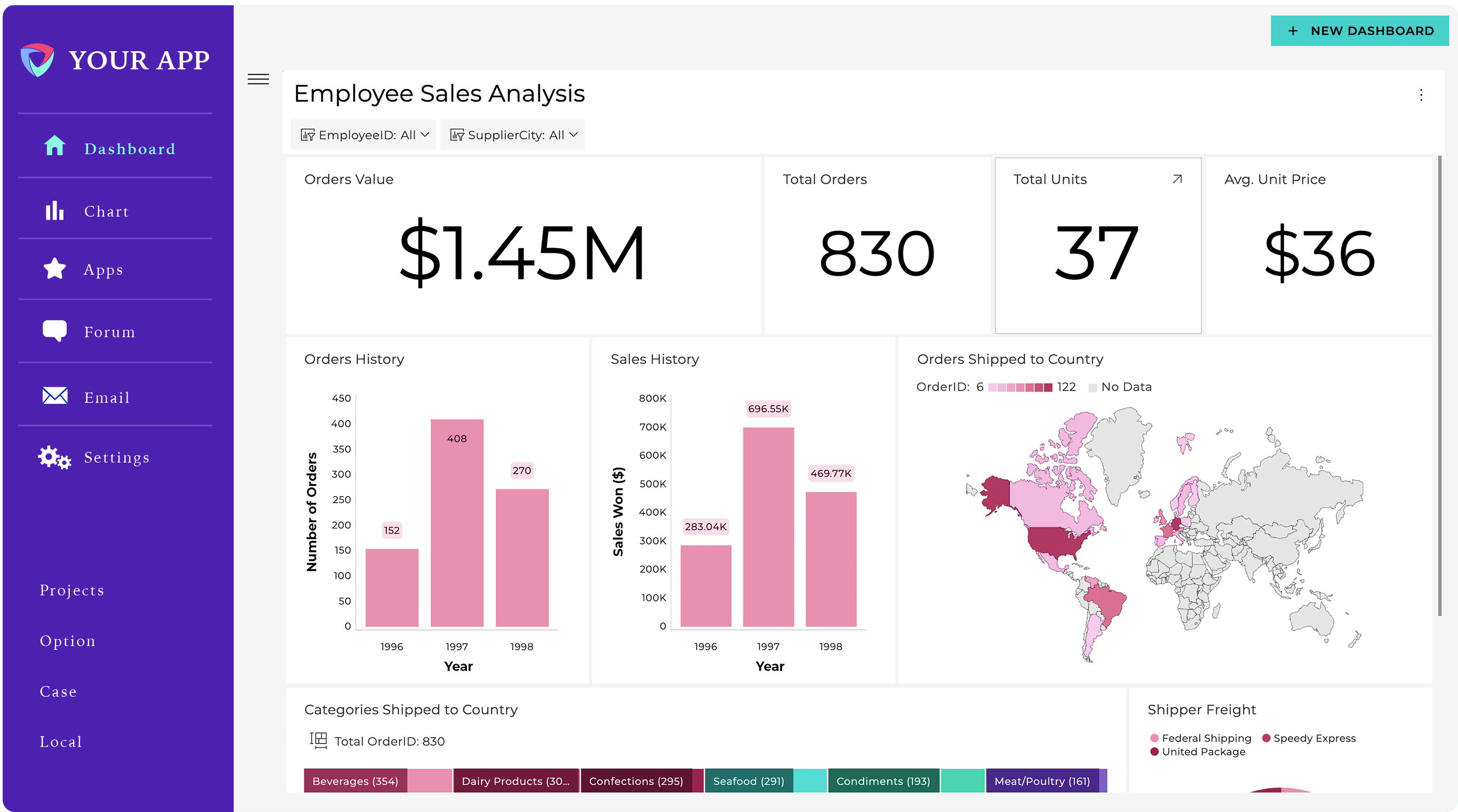
Scriptly Helps Pharmacies Identify Trends in Real Time with Reveal
Find out what are the pros and cons of the Sisense embedded analytics platform and how it matches Reveal’s self-service embedded analytics solution.
Executive Summary:
Embedded analytics has become a critical requirement for modern SaaS products. Whether you’re building an application from the ground up or adding dashboards into an existing application, the ability to seamlessly integrate analytics into your UX—without compromising speed, scale, or flexibility—can significantly impact user experience and development velocity.
Sisense is one of the more recognizable names in this space. Known for its enterprise reach and powerful backend capabilities, it’s often shortlisted by product leaders and technical teams exploring embedded BI platforms.
But how well does it serve teams focused on customer-facing embedding, developer control, and fast time-to-value?

Sisense brings several strengths to the table, especially for enterprise organizations focused on internal BI and complex data modeling:
Here are the core strengths that make Sisense a popular choice:
These strengths make Sisense appealing for teams looking to roll out dashboards across internal departments or where data security and modeling are paramount.
While Sisense offers powerful backend capabilities, it often introduces friction when used for embedding analytics into external, customer-facing products. Common challenges include:
Here are the most common challenges teams report when working with Sisense:
These limitations are especially important for teams building data-driven apps that demand full customization, efficient workflows, and scalable pricing.
When choosing an embedded analytics platform, your team’s product, technical, and growth priorities should drive the decision. Here’s a quick comparison to help you evaluate:
| Use Case | Reveal | Sisense |
|---|---|---|
| Internal dashboards for BI teams |
|
|
| Embedding into customer-facing SaaS |
|
|
| Fast time to value |
|
|
| Full UI/UX ownership |
|
|
| Predictable pricing |
|
|
If you’re embedding analytics into a customer-facing SaaS product—not just internal dashboards—Reveal was designed specifically to remove the friction many teams experience with platforms like Sisense.
Here’s what sets Reveal apart:
For organizations prioritizing speed, customization, and developer autonomy, Reveal offers an approach built for modern embedded analytics that emphasizes control, efficiency, and long-term scalability. See how Reveal compares to other platforms.

Sisense embedded analytics has strengths, notably in its data modeling and governance. But many teams discover its limitations when building embedded dashboards at scale or seeking full UI control.
For modern product teams that need flexibility, fast launches, and a streamlined developer experience, Reveal may be the better fit.
Recap Highlights:
Choosing the right tool depends on your goals, but knowing where each platform excels makes that decision easier.
Want to see what real embedded analytics looks like without the iFrames, limitations, or hidden fees? Book your 1:1 live demo and speak to a Reveal specialist today.
Back to Top